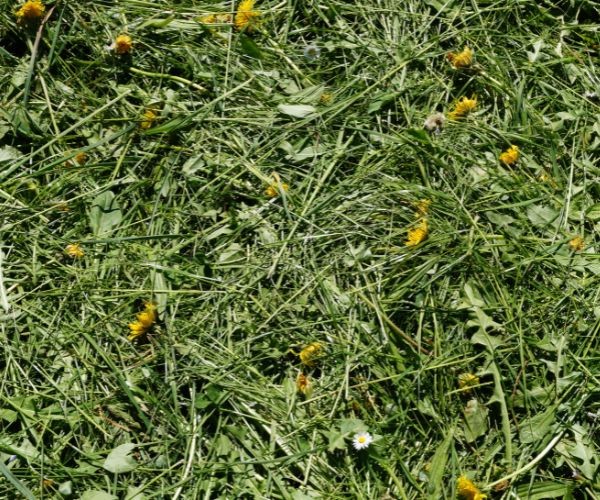- Lawn Turf
- Artificial
- Soil
- Timber
- Composite Decking
- Paving & Stone
Get In Touch With Our Experts Today!
Give us a Call! - Seed & Fertiliser
- Dressing
- Bark

July 04, 2023 Turf Tips
Does anything beat the smell of freshly cut grass? As dry and brighter days start heading our way, we’re all looking forward to getting outside and waking up our garden. One job we look forward to, in particular, is giving our grass that first post-winter trim. A freshly cut lawn creates a healthy-looking garden but what should you do with the grass clippings left behind?
There’s conflicting information regarding whether grass trimmings are considered as thatch, and do they contribute towards the condition of your turf if they remain after mowing. So, we thought we’d cut straight to it and clear these queries up.
Thatch is one of those common gardening terms which you’ve probably heard of but what does it actually mean? Thatch forms from the build-up of garden debris and lays on top of your grass. It tends to consist of natural matter such as leaves, dead flowers, roots and stems and can block essential sunlight from reaching your turf – causing all sorts of problems!
Although grass clippings can get caught up in thatch, they’re not considered a component of it. Therefore, unlike thatch, a thin layer of grass trimmings is ok to be left on your lawn as they’ll naturally break down through a process called ‘grasscycling’.
We’re all looking at ways to repurpose, recycle and help the planet – and gardening is no different. ‘Grasscycling’ is an eco-friendly way to reuse your grass clippings; by leaving your grass cuttings after mowing, the water and nutrients held within the cut blades feed back into the soil as they decompose. Helping grow a healthy lawn as well as providing free fertiliser!
However, this eco-friendly option comes with a few cautions. So, we’ve listed the benefits and watch-outs for leaving your grass clipping on your lawn.
If you wish to remove your grass clippings from your lawn, there are several ways you can sustainably remove or repurpose them, including:
Some customers love a pristine lawn without a carpet of grass trimmings that’ll coat your shoes, clothes or blankets as you enjoy your beautiful garden. You can use a rake to collect and remove your grass clippings but in the summer months, when we mow more regularly, this can be quite time-consuming. Instead, review the condition of your mower – make sure the blade is sharp and the box is secure. Keep an eye on your path as you mow too; if you start to see a trail of grass clippings, empty the grass box before continuing. This’ll save you from raking them up afterwards.
For the best advice on how to maintain your turf through the year, read our collection of helpful blogs. Or contact our friendly team who can recommend the best turf solution for your landscaping project.